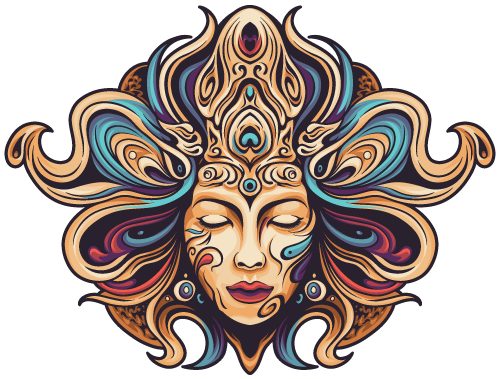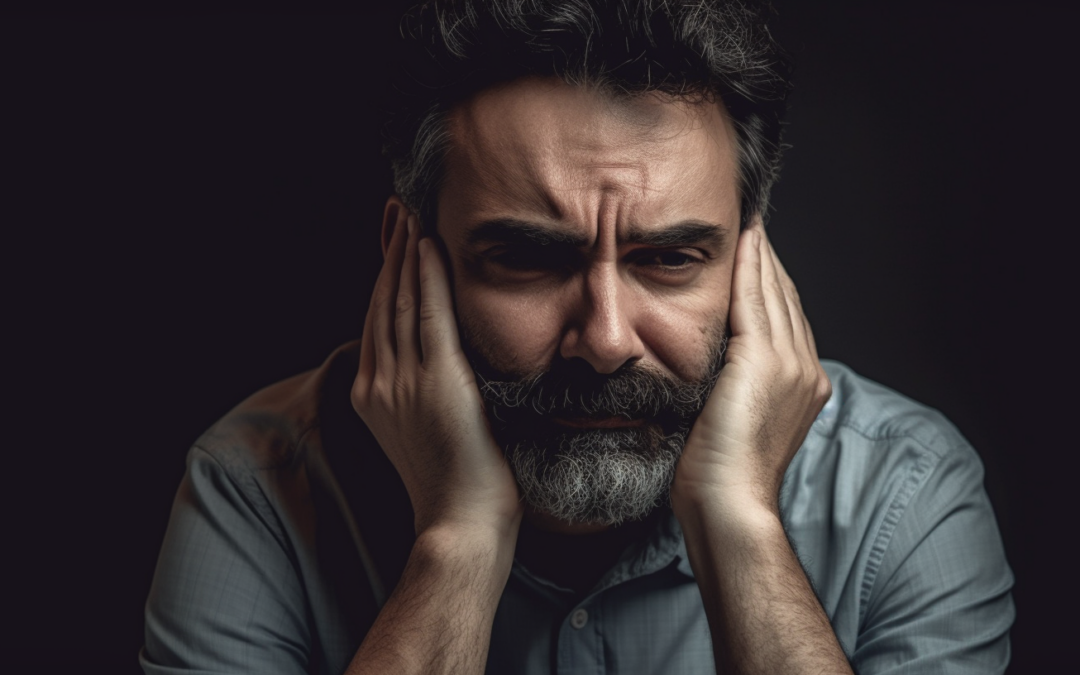PTSD: Can Psilocybin Help?
In the quest to mitigate the debilitating impact of Post-Traumatic Stress Disorder (PTSD), researchers have made significant strides in unveiling new therapeutic approaches. This article explores a potential breakthrough in this field: the use of psilocybin, a naturally occurring psychedelic compound. Psilocybin therapy offers a promising alternative to traditional PTSD treatments, which, despite their effectiveness, do not serve all patients optimally. As we delve into the nuances of PTSD, its current treatment modalities, and the groundbreaking potential of psilocybin, we hope to shed light on this revolutionary approach that could significantly alter the landscape of PTSD treatment.
1: Understanding Post-Traumatic Stress Disorder
Post-Traumatic Stress Disorder (PTSD) is a complex and debilitating psychiatric disorder that follows exposure to an intensely distressing traumatic event or series of events. These events could be of varying nature, including warfare, physical assault, natural disasters, or serious accidents. An example could be a soldier who has witnessed or experienced extreme violence during combat, or a survivor of a devastating earthquake. Affected individuals typically re-experience the trauma through intrusive memories, flashbacks, and nightmares. These recurrent traumatic recollections often cause significant emotional distress and functional impairment in interpersonal relationships, employment, and various other crucial life areas.
2: Traditional Therapeutic Approaches for PTSD
At present, treatment for PTSD predominantly relies on psychotherapy, with medication used in certain cases [2]. Therapeutic modalities such as Cognitive Processing Therapy (CPT), Prolonged Exposure Therapy (PE), and Eye Movement Desensitization and Restructuring (EMDR) are considered trauma-focused therapies and have demonstrated effectiveness [1]. Besides these, Acceptance and Commitment Therapy (ACT) has also been used successfully in the treatment of PTSD [8]. However, these treatments do present challenges; dropout rates can be higher in trauma-focused therapies as they often require confronting traumatic memories, which can be overwhelmingly distressing for some individuals [3].
3: Psilocybin’s Potential in PTSD Treatment
In search of more effective and better-tolerated treatment approaches, researchers are now examining the potential benefits of psilocybin, a naturally occurring psychedelic compound. Psilocybin is found in more than 200 species of mushrooms, also known as psilocybin mushrooms or “magic mushrooms.”
Although specific data or studies on psilocybin’s use for PTSD are not directly available in the provided web search results, based on previous knowledge up until my training data in September 2021, psilocybin could potentially offer a new perspective in the treatment of PTSD.
Psilocybin’s effect on consciousness and perception often results in experiences of ego-dissolution, unity, and increased connectivity between different areas of the brain. This ‘brain flexibility’ might enable individuals to revisit traumatic memories from a fresh perspective, aiding them in processing these memories in a less distressing manner.
To illustrate, consider a veteran with PTSD persistently plagued by a particular traumatic memory from combat. Conventional therapies might help them gradually confront and process this memory, but their emotional response could be so strong that they stop the therapy. However, under the influence of psilocybin, they might be able to detach themselves from the intensity of the memory, viewing it from a different, less fear-driven perspective. This change in perspective might allow them to better process the memory, potentially leading to a decrease in the distress associated with it.
4: Challenges and Future Directions in Psilocybin-Assisted PTSD Therapy
While the therapeutic potential of psilocybin is promising, it is crucial to note the necessity for rigorous clinical research and thoughtful consideration of potential risks and ethical implications. Psilocybin is a powerful substance, and its use should be in a controlled, supportive environment. The mindset of the individual and the physical surroundings, often termed ‘set and setting,’ are integral to the therapeutic process. Furthermore, sessions involving psilocybin should always be accompanied by appropriate preparation and post-session integration. These measures ensure safe and effective use of psilocybin, assisting patients in deriving the most therapeutic value from their experiences.
From a clinical standpoint, integrating psilocybin into a treatment plan could involve combining it with specific psychotherapy techniques. For instance, cognitive-behavioral techniques could be used during the preparation phase to help patients understand their responses to trauma and develop coping strategies. Following this, a psilocybin-assisted therapy session could facilitate deeper emotional processing of traumatic memories. Post-session integration could then help patients consolidate the insights they’ve gained and apply them to bring about lasting changes in their lives.
Despite the potential of psilocybin, future clinical trials should aim to investigate its safety and efficacy in treating PTSD. These studies must address various factors, such as identifying the optimal dosage, understanding the role of non-drug factors (like the therapeutic relationship and treatment context), and identifying individuals who might benefit most (or be at risk) from this form of treatment.
Section 5: The Potential Future of PTSD Treatment with Psilocybin
While there are many unanswered questions about the use of psilocybin in PTSD treatment, early indications of its therapeutic potential suggest it could play a significant role in the future. If future research confirms these preliminary findings in more extensive studies, psilocybin could present a novel approach to helping individuals with PTSD overcome their traumatic experiences and regain control of their lives.
In conclusion, while traditional therapies for PTSD such as Cognitive Processing Therapy, Prolonged Exposure Therapy, and Eye Movement Desensitization and Restructuring have shown considerable effectiveness, not all individuals respond favorably to these treatments [1]. Therefore, exploring novel, potentially more effective treatments like psilocybin is not just an exciting scientific endeavor, but a necessary step towards improving care for those struggling with this debilitating condition. With careful and rigorous research, psilocybin may become an integral part of PTSD treatment, offering hope to many who are currently suffering.
Mindset and Emotional State
The importance of an individual’s mindset and emotional state prior to a psilocybin session cannot be overstated. For instance, a person in a positive and optimistic mindset, coupled with a tranquil emotional state, may experience a sense of profound connection to the world, intense joy, and deep insights. On the other hand, individuals who are anxious or in a negative emotional state may have a distressing experience marked by fear, paranoia, or confusion. As an example, a study conducted by Carhart-Harris et al. in 2018, demonstrated that positive mood before psilocybin ingestion was associated with a more pleasant and mystical experience.
Personal History and Personality Traits
A user’s personal history, including their past traumas and mental health status, as well as their inherent personality traits, can also significantly impact their psilocybin journey. For example, someone with a history of severe anxiety might face heightened fear or paranoia during the experience. Furthermore, people with a personality trait like openness to experience might be more likely to have insightful or mystical experiences. A study published in the Journal of Psychopharmacology in 2017 showed that higher levels of the personality trait openness were associated with better experiences during psilocybin sessions.
Intentions for Use
The intentions a person has for using psilocybin can serve as a compass during the psychedelic experience. Someone aiming for self-exploration or spiritual growth might approach the experience with a sense of reverence and curiosity, thereby enriching the journey. Contrastingly, someone using psilocybin casually or recreationally without specific intentions may have a vastly different, and potentially more unpredictable, experience.
The Role of ‘Setting’
‘Setting’ refers to the external conditions during the psychedelic experience, including the physical environment, social milieu, cultural context, and the availability of professional guidance.
Physical Environment
The physical environment significantly affects the psilocybin experience. For example, a quiet, clean, and familiar place could foster feelings of safety and tranquility, thereby enhancing the psychedelic experience. By contrast, a noisy, messy, or unfamiliar place might breed discomfort and anxiety. A case study by Belser et al. (2017) emphasized the importance of a comforting setting in mitigating anxiety during a psilocybin session.
Here are some items and environmental factors that may enhance the setting:
- Comfortable Furniture: A comfortable couch, bed, or chair where the person can relax or even lie down is essential. Including blankets or pillows can also provide additional comfort.
- Eye Mask: An eye mask can be beneficial for users who want to focus on their internal experience and eliminate external distractions.
- Earplugs or Headphones: For those who want to minimize disruptive external noise, earplugs can be useful. Conversely, headphones can be used for listening to calm, instrumental music or guided meditations, which many find enhances their experience.
- Lighting: Soft, warm, and adjustable lighting can create a relaxing atmosphere. Some may prefer natural light, while others might opt for low artificial lighting. Candles can also contribute to a serene setting, but safety should be the priority.
- Temperature Control: The room temperature should be comfortable, as psilocybin can occasionally alter one’s sensitivity to hot or cold.
- Nature Elements: If possible, a setting with access to nature such as a garden or a view of trees can be soothing. Indoor plants or nature sounds can also add a calming ambiance.
- Artwork and Objects: Some people find inspiration in certain objects or visuals, such as peaceful paintings, tapestries, or sentimental items.
- Water and Snacks: Having water nearby is important to stay hydrated. Some users might also appreciate light, healthy snacks for after their session.
- Journal and Pen: Many users find it helpful to journal their experience as it unfolds or shortly after, as a way of documenting insights or feelings.
- Comfortable Clothing: Loose, comfortable clothing can help the individual feel at ease and unrestricted.
Presence of Others
The company during a psychedelic experience can deeply impact the journey. Having supportive, understanding, and calm companions can create a nurturing environment that may intensify positive experiences. For instance, in psilocybin trials for end-of-life distress, the comforting presence of trained therapists was found to enhance feelings of safety and acceptance, as documented in a 2016 study by Griffiths et al.
Cultural Context
The broader cultural and societal context can shape perceptions and interpretations of the psilocybin experience. For example, in societies where psychedelic use is normalized or viewed as a path to enlightenment, individuals may be more likely to have positive expectations and feel more comfortable during their experience. Conversely, in societies where psychedelics are stigmatized, users may feel anxious, guilty, or fearful, which could negatively impact their experiences. An anthropological study by Langdon and colleagues (2016) showed that cultural beliefs surrounding the use of psychedelics significantly influenced the user’s experiences, with more open cultures often reporting more positive and meaningful experiences.
Guidance
Professional guidance is becoming an integral part of the therapeutic use of psilocybin. This guidance often takes the form of psychedelic-assisted therapy, where trained therapists are present before, during, and after the psychedelic experience. The role of these therapists is crucial, as they can help individuals prepare for the experience, provide reassurance during the session, and facilitate integration afterward. For instance, a study by Johnson and Griffiths (2017) found that the presence of trained therapists during psilocybin sessions was associated with more positive outcomes and fewer adverse effects.
Moreover, therapists can help individuals to contextualize and extract meaning from their experiences, which is particularly valuable when dealing with challenging or confusing trips. The guidance of trained therapists can transform what might initially seem like a distressing experience into a profound opportunity for personal growth.
Conclusion
In summary, the profound influence of set and setting on the effects of psilocybin underscores the complexity and the multifaceted nature of the psychedelic experience. It’s not simply a matter of pharmacology; our minds and environments play significant roles in shaping these experiences. Understanding the importance of set and setting is crucial for harnessing the therapeutic potential of psilocybin and other psychedelic substances. As research continues to explore this field, there is hope for developing more refined guidelines for optimizing set and setting to further enhance the beneficial effects of these substances while minimizing potential risks.

